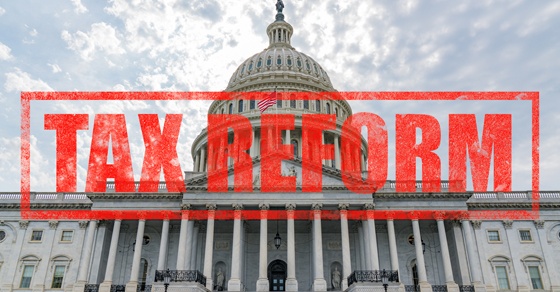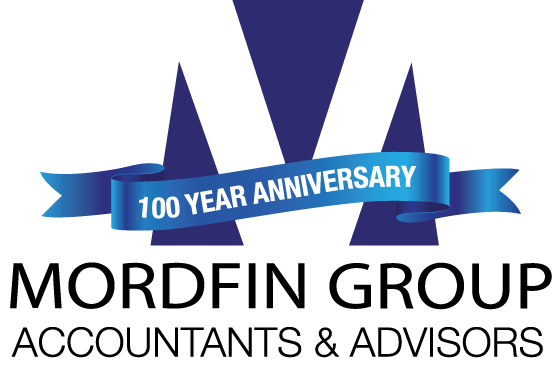 Prepaying property taxes related to the current year but due the following year has long been one of the most popular and effective year-end tax-planning strategies. But does it still make sense in 2018?
Prepaying property taxes related to the current year but due the following year has long been one of the most popular and effective year-end tax-planning strategies. But does it still make sense in 2018?
Category: TCJA (page 2)
Catch-up retirement plan contributions can be particularly advantageous post-TCJA
 Will you be age 50 or older on December 31? Are you still working? Are you already contributing to your 401(k) plan or Savings Incentive Match Plan for Employees (SIMPLE) up to the regular annual limit? Then you may want to make “catch-up” contributions by the end of the year. Increasing your retirement plan contributions can be particularly advantageous if your itemized deductions for 2018 will be smaller than in the past because of changes under the Tax Cuts and Jobs Act (TCJA).
Will you be age 50 or older on December 31? Are you still working? Are you already contributing to your 401(k) plan or Savings Incentive Match Plan for Employees (SIMPLE) up to the regular annual limit? Then you may want to make “catch-up” contributions by the end of the year. Increasing your retirement plan contributions can be particularly advantageous if your itemized deductions for 2018 will be smaller than in the past because of changes under the Tax Cuts and Jobs Act (TCJA).
Research credit available to some businesses for the first time
 The Tax Cuts and Jobs Act (TCJA) didn’t change the federal tax credit for “increasing research activities,” but several TCJA provisions have an indirect impact on the credit. As a result, the research credit may be available to some businesses for the first time.
The Tax Cuts and Jobs Act (TCJA) didn’t change the federal tax credit for “increasing research activities,” but several TCJA provisions have an indirect impact on the credit. As a result, the research credit may be available to some businesses for the first time.
3 traditional midyear tax planning strategies for individuals that hold up post-TCJA
 With its many changes to individual tax rates, brackets and breaks, the Tax Cuts and Jobs Act (TCJA) means taxpayers need to revisit their tax planning strategies. Certain strategies that were once tried-and-true will no longer save or defer tax. But there are some that will hold up for many taxpayers. And they’ll be more effective if you begin implementing them this summer, rather than waiting until year end. Take a look at these three ideas, and contact us to discuss what midyear strategies make sense for you.
With its many changes to individual tax rates, brackets and breaks, the Tax Cuts and Jobs Act (TCJA) means taxpayers need to revisit their tax planning strategies. Certain strategies that were once tried-and-true will no longer save or defer tax. But there are some that will hold up for many taxpayers. And they’ll be more effective if you begin implementing them this summer, rather than waiting until year end. Take a look at these three ideas, and contact us to discuss what midyear strategies make sense for you.
Sec. 179 expensing provides small businesses tax savings on 2017 returns — and more savings in the future
 If you purchased qualifying property by December 31, 2017, you may be able to take advantage of Section 179 expensing on your 2017 tax return. You’ll also want to keep this tax break in mind in your property purchase planning, because the Tax Cuts and Jobs Act (TCJA), signed into law this past December, significantly enhances it beginning in 2018.
If you purchased qualifying property by December 31, 2017, you may be able to take advantage of Section 179 expensing on your 2017 tax return. You’ll also want to keep this tax break in mind in your property purchase planning, because the Tax Cuts and Jobs Act (TCJA), signed into law this past December, significantly enhances it beginning in 2018.
Tax credit for hiring from certain “target groups” can provide substantial tax savings
 Many businesses hired in 2017, and more are planning to hire in 2018. If you’re among them and your hires include members of a “target group,” you may be eligible for the Work Opportunity tax credit (WOTC). If you made qualifying hires in 2017 and obtained proper certification, you can claim the WOTC on your 2017 tax return.
Many businesses hired in 2017, and more are planning to hire in 2018. If you’re among them and your hires include members of a “target group,” you may be eligible for the Work Opportunity tax credit (WOTC). If you made qualifying hires in 2017 and obtained proper certification, you can claim the WOTC on your 2017 tax return.
What’s your mileage deduction?
 Individuals can deduct some vehicle-related expenses in certain circumstances. Rather than keeping track of the actual costs, you can use a standard mileage rate to compute your deductions. For 2017, you might be able to deduct miles driven for business, medical, moving and charitable purposes. For 2018, there are significant changes to some of these deductions under the Tax Cuts and Jobs Act (TCJA).
Individuals can deduct some vehicle-related expenses in certain circumstances. Rather than keeping track of the actual costs, you can use a standard mileage rate to compute your deductions. For 2017, you might be able to deduct miles driven for business, medical, moving and charitable purposes. For 2018, there are significant changes to some of these deductions under the Tax Cuts and Jobs Act (TCJA).
2 tax credits just for small businesses may reduce your 2017 and 2018 tax bills
 Tax credits reduce tax liability dollar-for-dollar, potentially making them more valuable than deductions, which reduce only the amount of income subject to tax. Maximizing available credits is especially important now that the Tax Cuts and Jobs Act has reduced or eliminated some tax breaks for businesses. Two still-available tax credits are especially for small businesses that provide certain employee benefits.
Tax credits reduce tax liability dollar-for-dollar, potentially making them more valuable than deductions, which reduce only the amount of income subject to tax. Maximizing available credits is especially important now that the Tax Cuts and Jobs Act has reduced or eliminated some tax breaks for businesses. Two still-available tax credits are especially for small businesses that provide certain employee benefits.
Tax deduction for moving costs: 2017 vs. 2018
 If you moved for work-related reasons in 2017, you might be able to deduct some of the costs on your 2017 return — even if you don’t itemize deductions. (Or, if your employer reimbursed you for moving expenses, that reimbursement might be excludable from your income.) The bad news is that, if you move in 2018, the costs likely won’t be deductible, and any employer reimbursements will probably be included in your taxable income.
If you moved for work-related reasons in 2017, you might be able to deduct some of the costs on your 2017 return — even if you don’t itemize deductions. (Or, if your employer reimbursed you for moving expenses, that reimbursement might be excludable from your income.) The bad news is that, if you move in 2018, the costs likely won’t be deductible, and any employer reimbursements will probably be included in your taxable income.
What nonprofits need to know about the new tax law
 The number of taxpayers who itemize deductions on their federal tax return — and, thus, are eligible to deduct charitable contributions — is estimated by the Tax Policy Center to drop from 37% in 2017 to 16% in 2018. That’s because the recently passed Tax Cuts and Jobs Act (TCJA) substantially raises the standard deduction. Many not-for-profit organizations are understandably worried about how this change will affect donations. But this isn’t the only TCJA provision that affects nonprofits.
The number of taxpayers who itemize deductions on their federal tax return — and, thus, are eligible to deduct charitable contributions — is estimated by the Tax Policy Center to drop from 37% in 2017 to 16% in 2018. That’s because the recently passed Tax Cuts and Jobs Act (TCJA) substantially raises the standard deduction. Many not-for-profit organizations are understandably worried about how this change will affect donations. But this isn’t the only TCJA provision that affects nonprofits.
